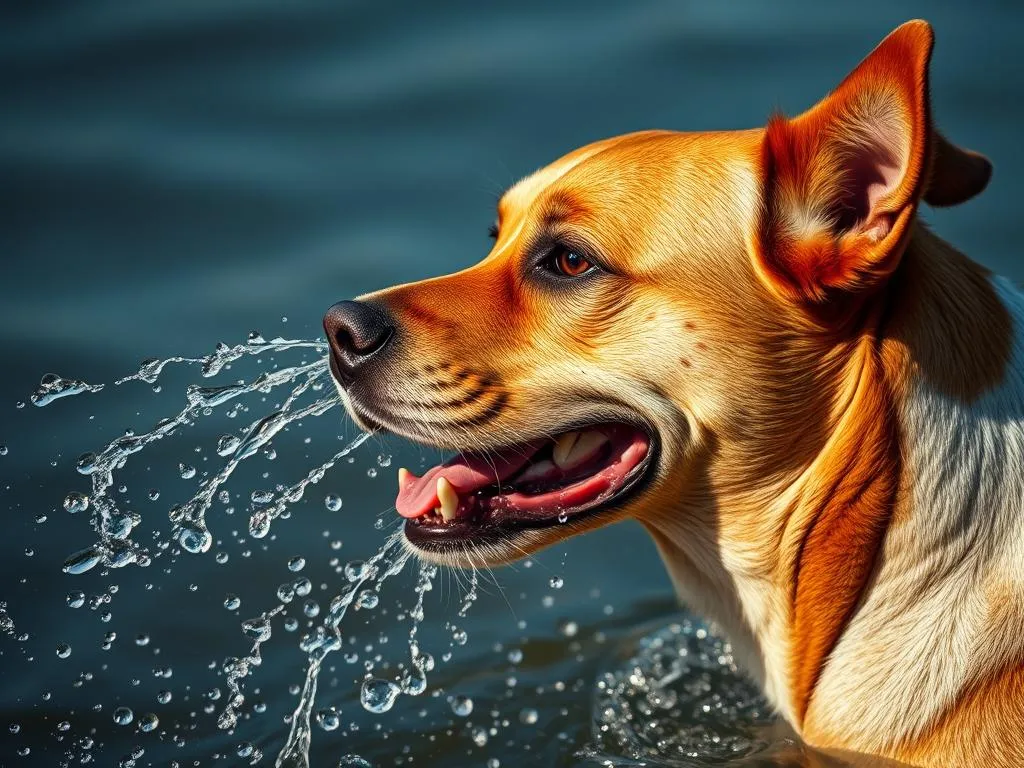
Importance of Hydration for Dogs
Hydration is a cornerstone of canine health. Just like humans, dogs need a sufficient intake of water to maintain their bodily functions. Dehydration can lead to serious health complications, impacting everything from digestion to circulation. Studies show that even mild dehydration can affect a dog’s performance and overall well-being. It’s estimated that a significant number of dogs experience dehydration at some point in their lives, making it crucial for pet owners to understand how to keep their furry friends hydrated.
Understanding Canine Hydration Needs
Water Requirements for Dogs
A variety of factors influence how much water a dog needs. These factors include their size, age, activity level, and the climate they live in. For example, larger breeds require more water compared to smaller ones, and active dogs will need additional hydration during and after exercise.
As a general guideline, a dog should drink about one ounce of water per pound of body weight daily. This means a 20-pound dog should consume approximately 20 ounces of water each day. Always keep in mind that this is just a baseline; adjustments may be necessary based on the individual dog’s needs.
Signs of Dehydration in Dogs
Recognizing the signs of dehydration early can be vital in preventing serious health issues. Physical signs of dehydration include:
- Dry mouth: A dry or sticky feeling in the mouth can indicate dehydration.
- Lethargy: A decrease in energy levels may be a sign that your dog is not adequately hydrated.
- Sunken eyes: Dehydrated dogs often exhibit sunken or dull eyes.
Behavioral signs can also provide clues:
- Lack of energy: If your normally playful dog suddenly seems tired or unwilling to engage, it may be time to check their hydration levels.
- Decreased appetite: A dog that refuses to eat may also be dehydrated.
Understanding these signs can help you address hydration issues before they escalate.
Sources of Hydration
Fresh Water
Providing clean, fresh water daily is essential for keeping your dog hydrated. Dog owners should ensure that water bowls are filled with fresh water at all times, as stale or dirty water can deter dogs from drinking.
When selecting a water bowl, consider materials like stainless steel or ceramic. Stainless steel is durable and easy to clean, while ceramic bowls can be more aesthetically pleasing and come in various designs. Both options are preferable to plastic, which can harbor bacteria and may leach chemicals into the water.
Hydration through Food
Did you know that the food you feed your dog can also contribute to their hydration? Wet food typically contains around 70-80% water, making it a great option for hydration. Conversely, dry kibble has much lower moisture content, so combining it with water can significantly boost your dog’s hydration levels.
Incorporating fruits and vegetables with high water content into your dog’s diet can also help. Some excellent options include:
- Watermelon: A refreshing treat that is safe for dogs in moderation.
- Cucumbers: Low in calories and hydrating, cucumbers can be a crunchy snack for your dog.
- Carrots: These are not only hydrating but also beneficial for dental health.
Techniques to Encourage Hydration
Making Water Accessible
Ensuring that your dog has constant access to water is fundamental. Place water bowls in various areas of your home, especially in places where your dog spends the most time. Consider using non-slip bowls to prevent spills and encourage your dog to drink more frequently.
Flavoring Water
Sometimes, dogs may be reluctant to drink enough water. One effective way to encourage hydration is by flavoring their water. Safe options include low-sodium chicken or beef broth. Just a splash can make a big difference in enticing your dog to drink.
Commercial dog hydration products, such as electrolyte solutions, are also available. These can be particularly beneficial for active dogs or those recovering from illness.
Using Hydration Toys and Devices
Hydration toys and interactive water dispensers can be a fun way to get your dog to drink more water. These devices often encourage play, which can prompt your dog to hydrate while having fun. Look for options that suit your dog’s personality and needs.
Hydration During Activities
Hydration Before and After Exercise
Keeping your dog hydrated before and after exercise is crucial to their well-being. Offer water before you head out for a walk or play session to ensure they start with a full tank. Post-exercise, allow them to drink as needed to replenish lost fluids.
Keeping Dogs Hydrated in Hot Weather
During the summer months, keeping your dog hydrated becomes even more critical. Always bring water along during walks and outdoor activities. Consider using portable water bottles designed for dogs, which often come with an attached drinking bowl for convenience.
It’s essential to recognize the signs of heatstroke, which can be exacerbated by dehydration. Symptoms include excessive panting, drooling, and weakness. If you notice any of these signs, move your dog to a cooler area and offer water immediately.
Traveling with Dogs
Travel can disrupt a dog’s routine, including their hydration habits. When planning road trips, always bring enough water along. Portable bowls and water bottles are excellent solutions for keeping your dog hydrated on the go. Frequent breaks during travel can also provide opportunities for hydration.
Health Considerations Related to Hydration
Conditions Leading to Dehydration
Several health issues can contribute to dehydration in dogs. Conditions such as vomiting, diarrhea, and diabetes can lead to significant fluid loss. If your dog shows any signs of dehydration, especially in conjunction with these symptoms, consult your veterinarian immediately. Early intervention can prevent complications.
The Role of Electrolytes
Electrolytes play a significant role in hydration and cellular function. In situations where your dog is losing fluids (due to diarrhea, vomiting, or excessive heat), electrolyte supplements can help restore balance. However, consult your veterinarian before introducing any supplements into your dog’s diet to ensure they are appropriate for your pet’s specific needs.
Recap of Key Points
Keeping your dog hydrated is vital for their overall health and well-being. Make it a priority to provide fresh water daily, recognize the signs of dehydration, and offer a variety of hydration sources, including food and flavored water. During hot weather or after exercise, always be proactive about your dog’s hydration needs.
Encouragement for Dog Owners
Being a responsible dog owner means staying vigilant about your pet’s hydration. Regular health check-ups and monitoring hydration levels can help catch potential issues early. Remember, a well-hydrated dog is a happy and healthy dog!
FAQs
How much water should my dog drink daily?
A general guideline is about one ounce of water per pound of body weight daily, but this can vary based on size, activity level, and climate.
What are the signs of dehydration in dogs?
Look for signs like dry mouth, lethargy, sunken eyes, lack of energy, and decreased appetite.
Can I use flavored water to encourage my dog to drink?
Yes! Low-sodium broth is a safe and enticing option for flavoring your dog’s water.
What should I do if my dog refuses to drink water?
Try offering flavored water, adding water to their food, or providing fresh water in different bowls or locations. If the issue persists, consult your veterinarian.
How can I keep my dog hydrated during travel?
Bring portable water bowls and water bottles, and schedule regular breaks for hydration during your trip.









